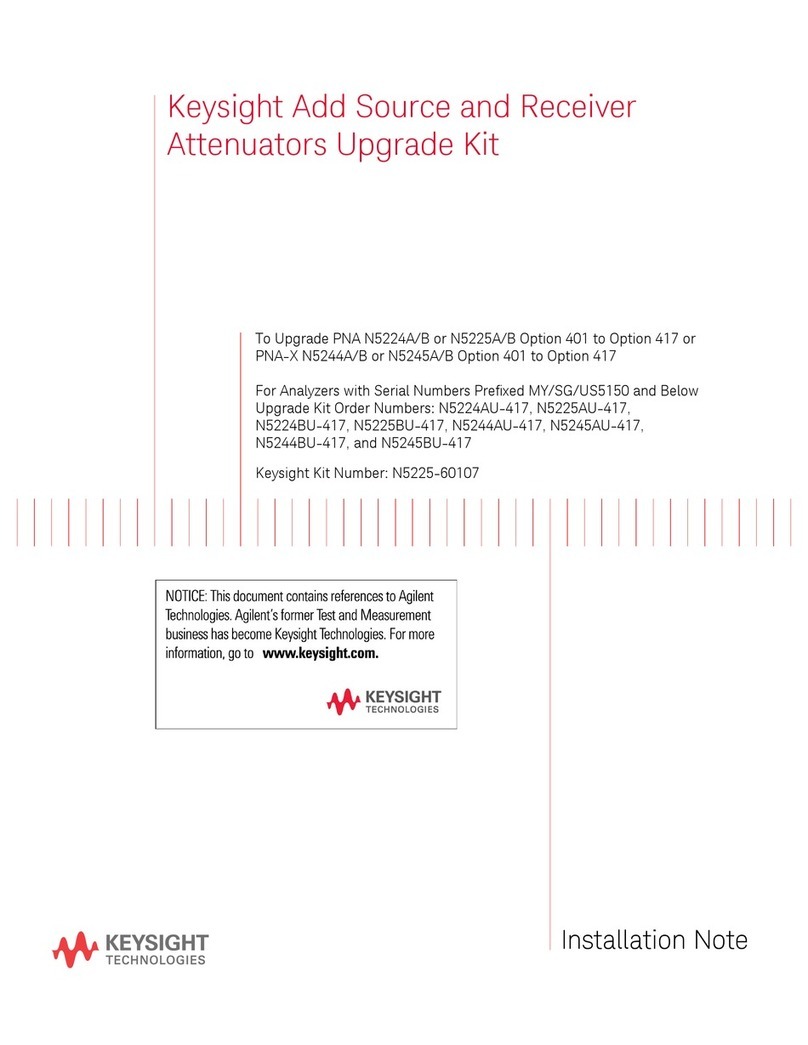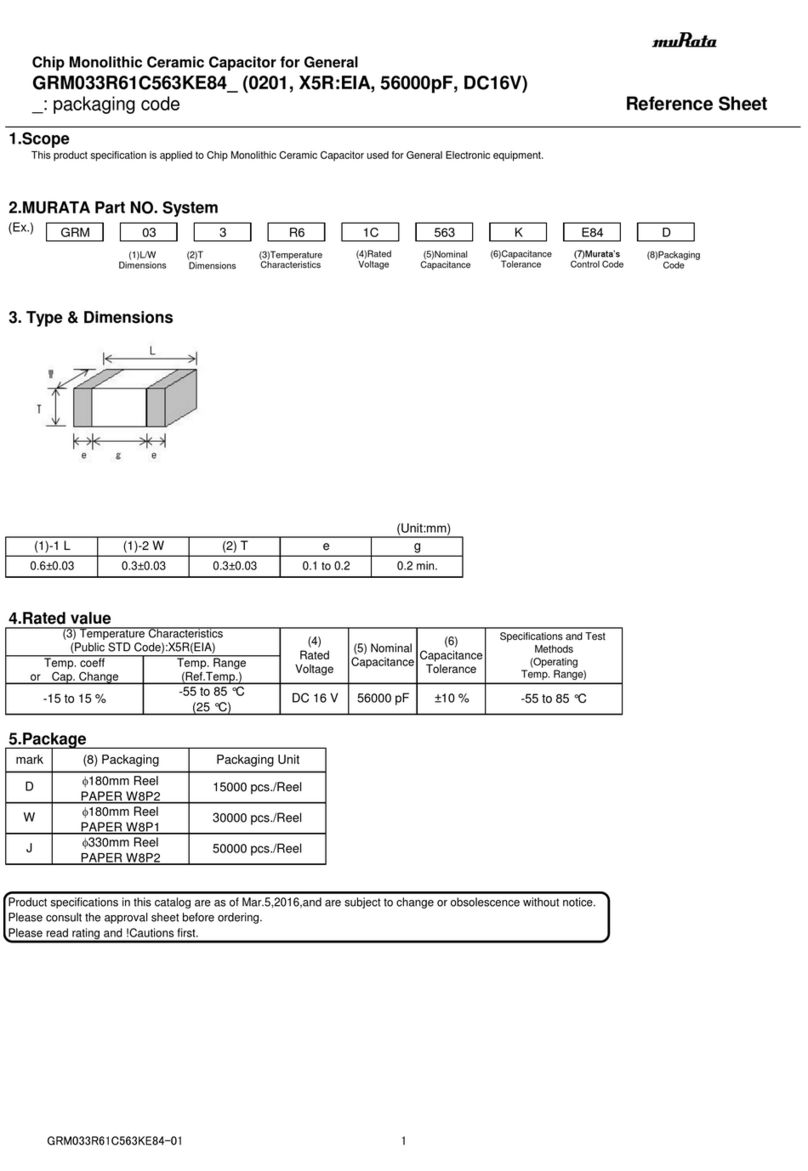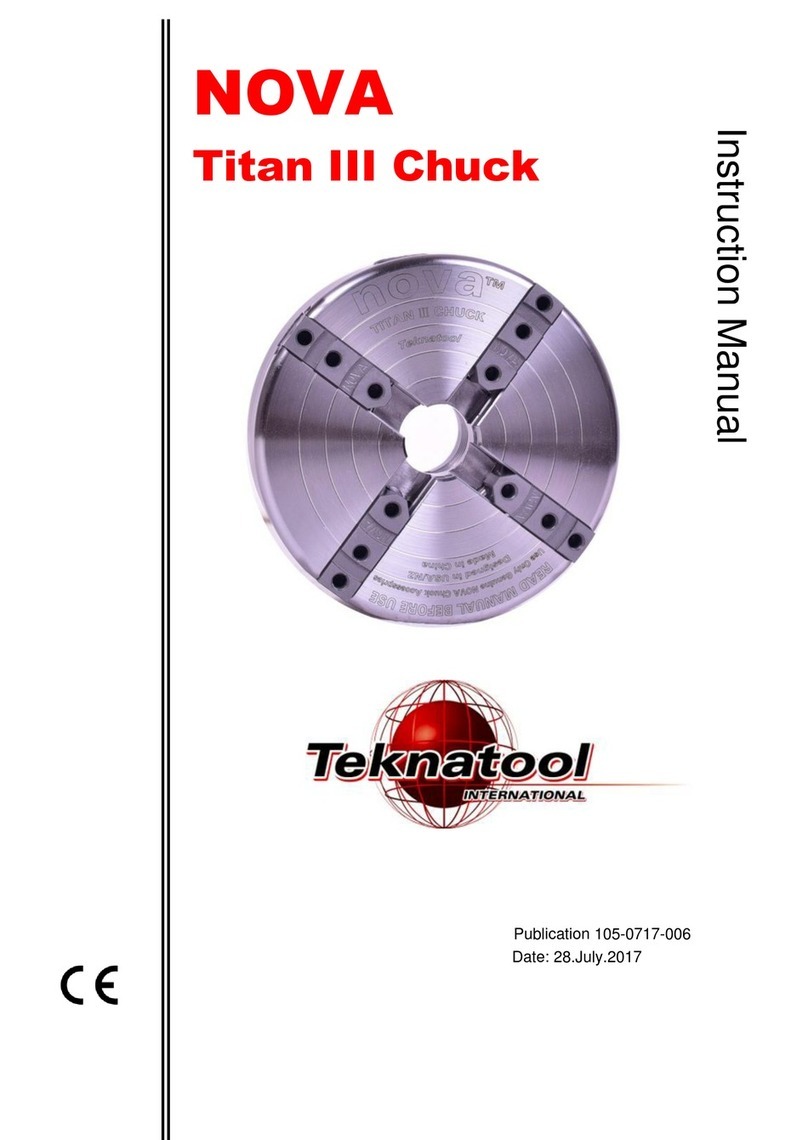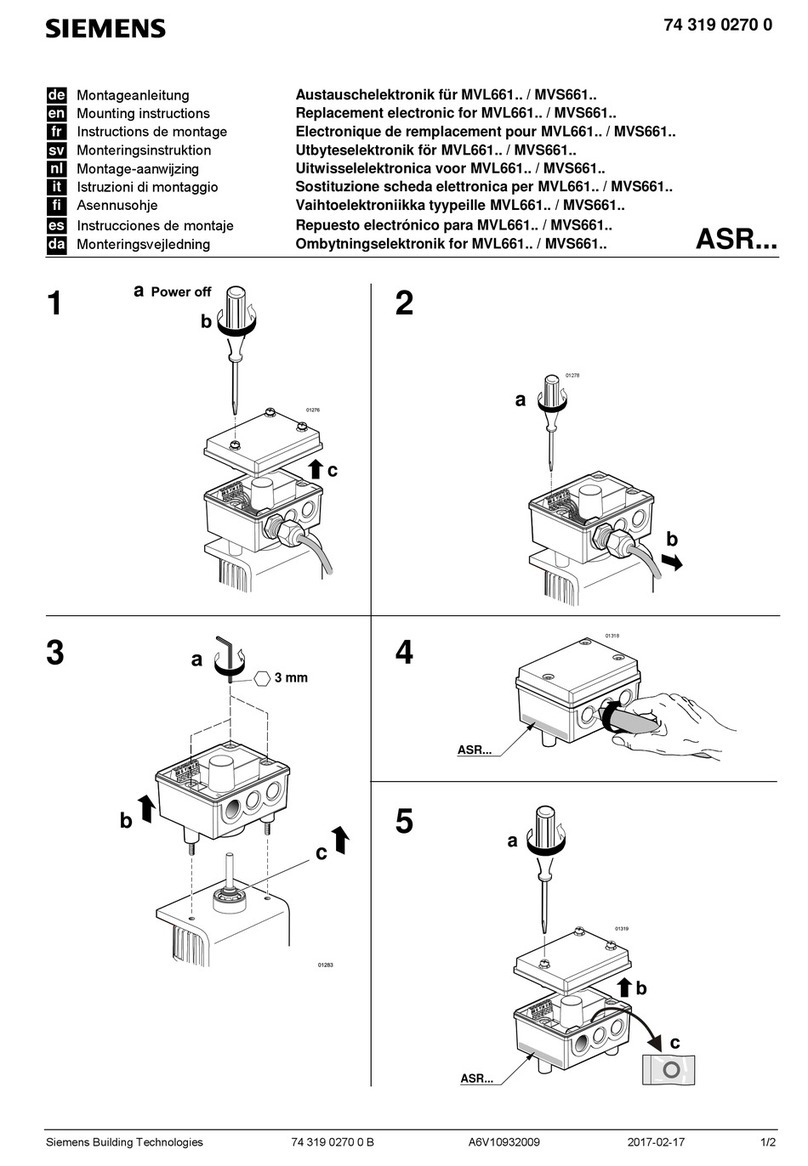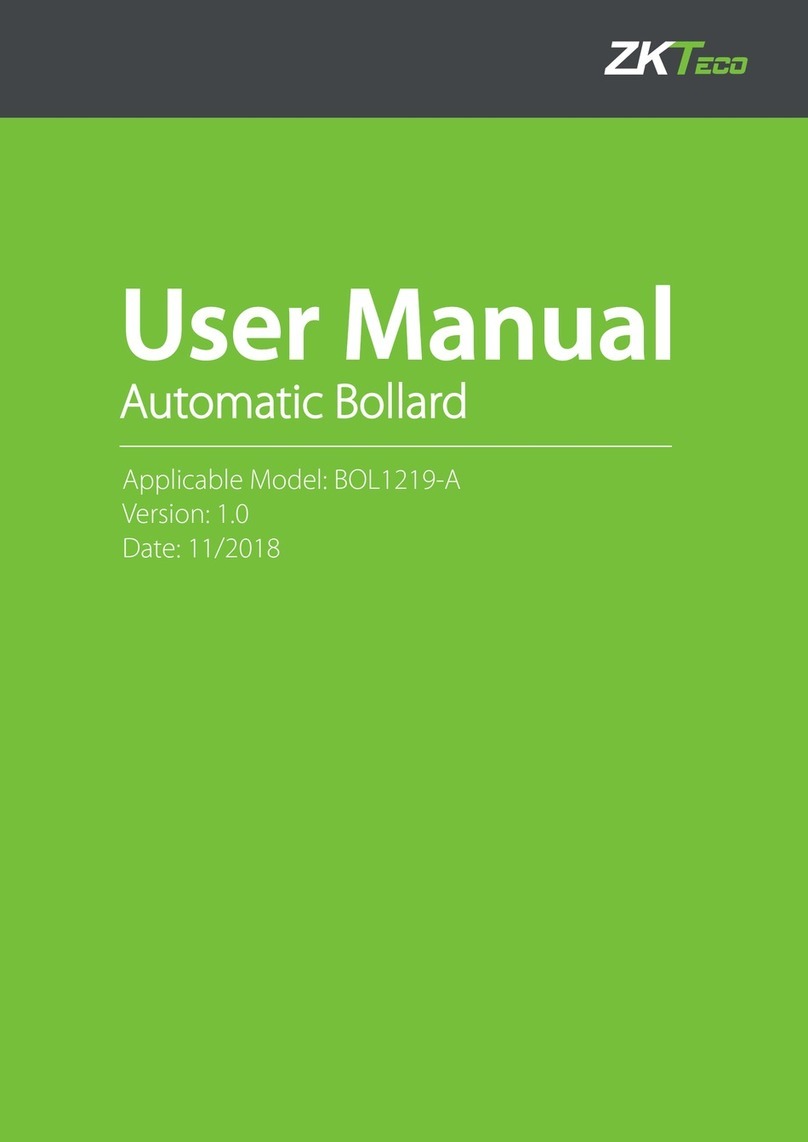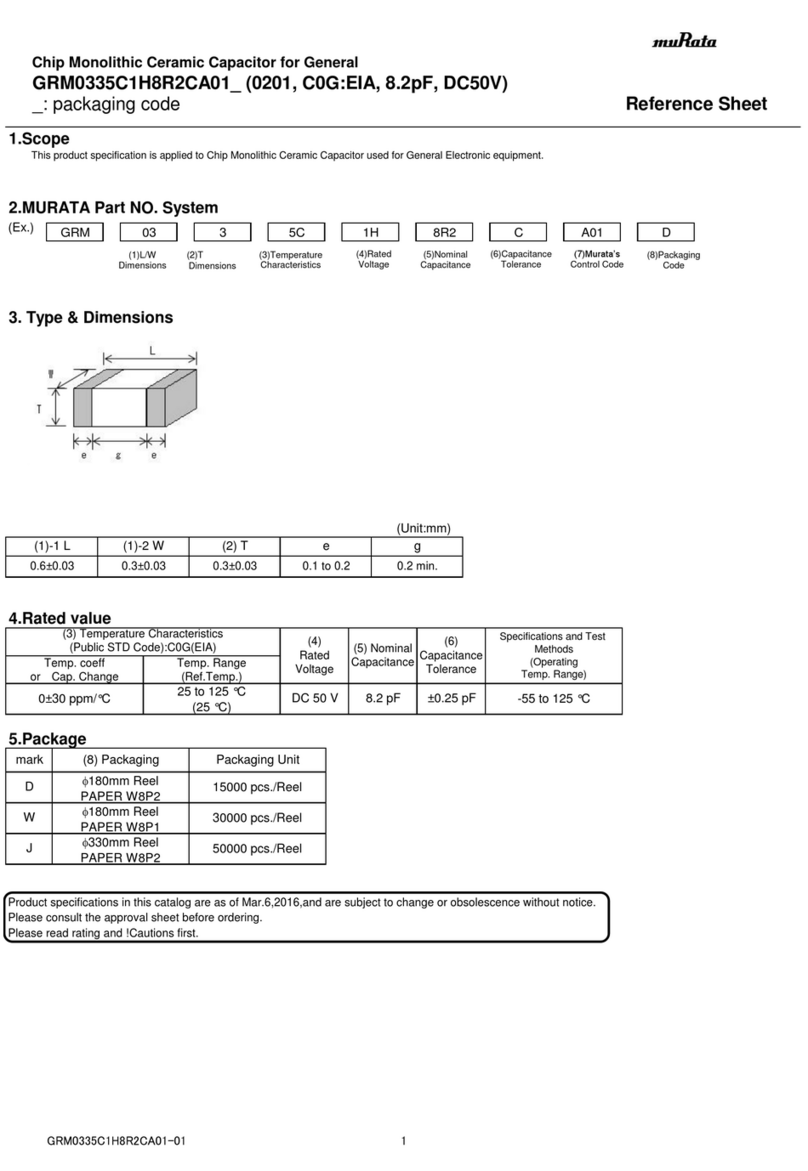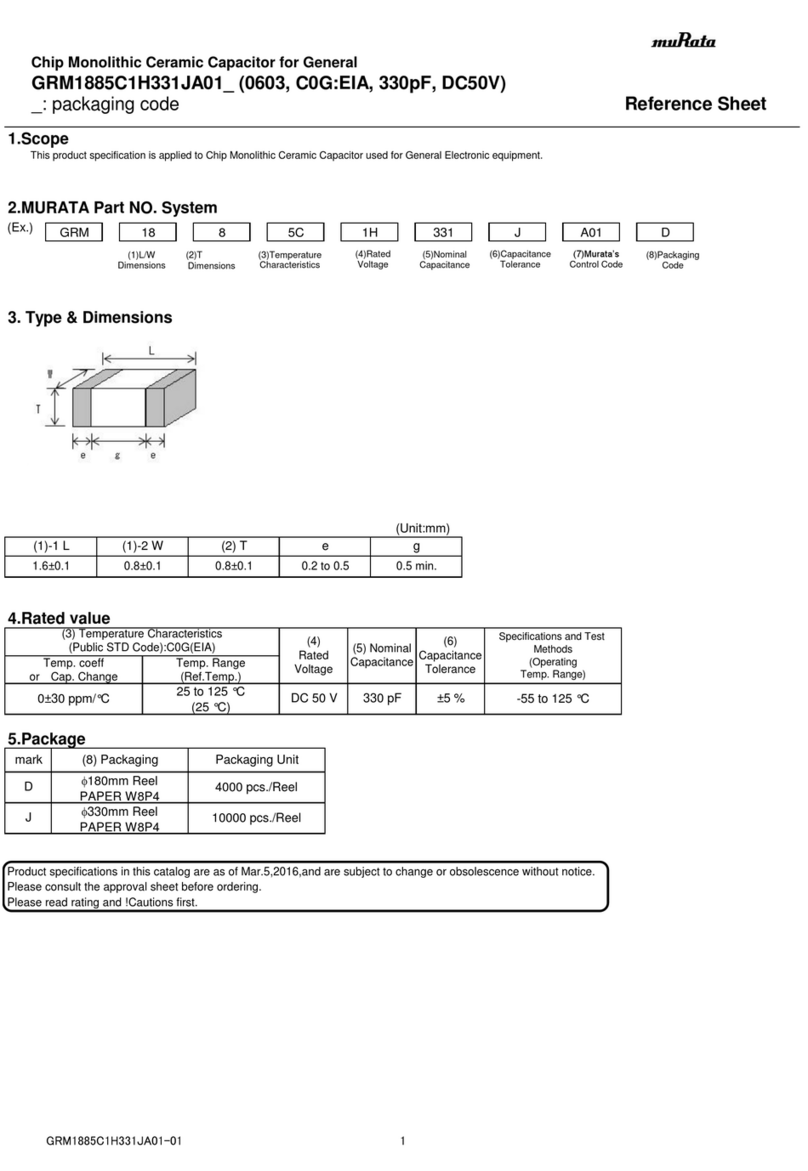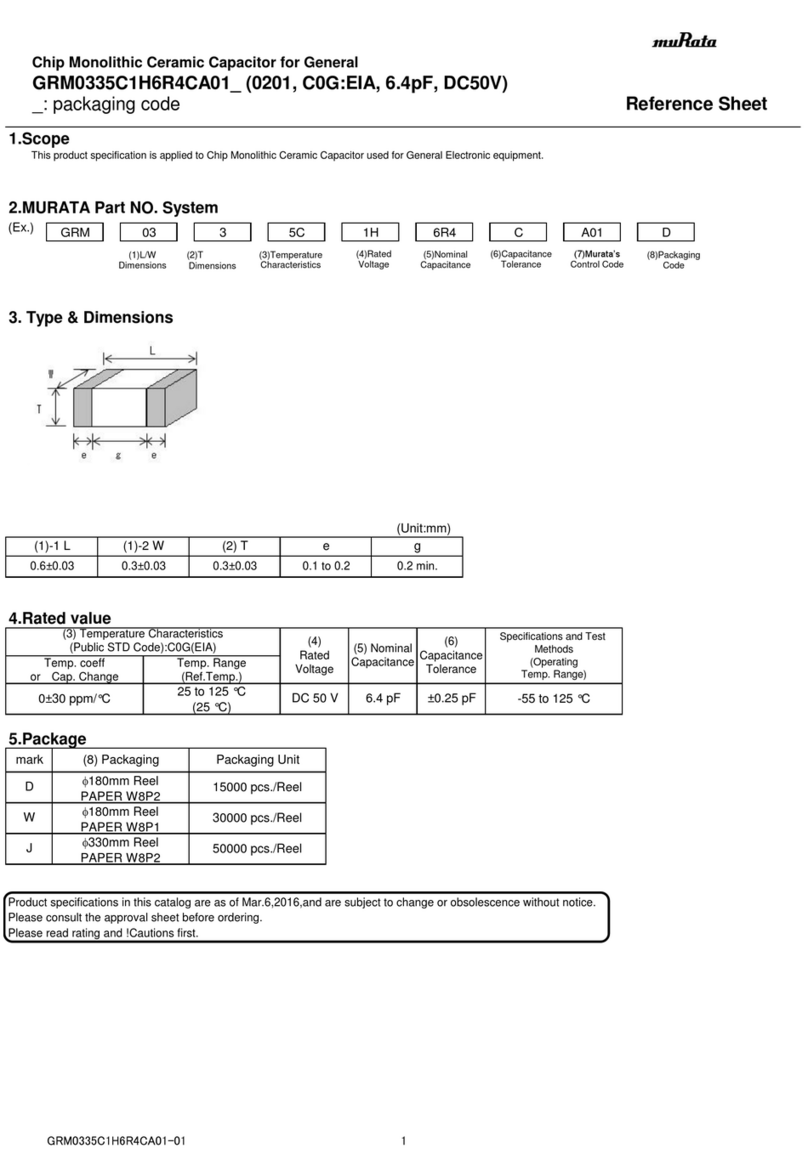Elgo FMAX2 Series User manual

Operating Manual
SERIES FMAX2 / FMAX3
Magnetic Absolute Measuring System for linear and rotative Applications
Magnetic absolute measurement with 19 bit resolution
Cost-effective alternative to comparable measuring systems
Suitable for linear and rotary applications
Ideal solution for motor feedback systems
Two versions for different measuring lengths:
FMAX2: max. 192 mm / FMAX3: max. 240 mm
Insensitive to dust, dirt and water
Contactless, wear-free measuring principle
Position detection even in de-energized state
Additional incremental output signals
(HTL, TTL or SIN/COS) optionally available
Quick and easy installation
799000919 / Rev. 0 / 2020-02-21
Translation of the original operating manual

Contents
- 3 -
1Contents
1Contents ..................................................................................................... 3
2List of Figures............................................................................................. 4
3List of Tables .............................................................................................. 4
4General, Safety, Transport and Storage .................................................... 5
4.1 Information Operating Manual ........................................................................................... 5
4.2 Explanation of Symbols...................................................................................................... 5
4.3 Statement of Warranties..................................................................................................... 6
4.4 Demounting and Disposal.................................................................................................. 6
4.5 General Causes of Risk ..................................................................................................... 6
4.6 Personal Protective Equipment ............................................................................................ 6
4.7 Conventional Use ............................................................................................................. 7
4.8 Safety Instructions for Transport, Unpacking and Loading ....................................................... 7
4.9 Handling of Packaging Material.......................................................................................... 7
4.10 Inspection of Transport ...................................................................................................... 7
4.11 Storage ........................................................................................................................... 7
5Product Features ........................................................................................ 8
5.1 Linear Measurement with Magnetic Tape.............................................................................. 8
5.2 Rotative Measurement with Magnetic Ring ............................................................................ 8
5.3 Functional Principle........................................................................................................... 8
5.4 The Absolute Measuring Principle........................................................................................ 9
5.5 Optional Incremental Signal Outputs................................................................................... 9
6Technical Data ........................................................................................... 9
6.1 Identification .................................................................................................................... 9
6.2 Dimensions Sensor............................................................................................................ 9
6.3 Technical Data Sensor..................................................................................................... 10
6.4 Technical Data Magnetic Tape ......................................................................................... 11
7Installation and First Start-Up ................................................................. 12
7.1 Operating Area .............................................................................................................. 12
7.2 Installation of the Magnetic Tape ...................................................................................... 13
7.3 Installation of the Magnetic Ring ....................................................................................... 15
7.4 Montage des Sensors ...................................................................................................... 16
7.5 Active Sensor Area .......................................................................................................... 16
8SSI Interface............................................................................................. 19
8.1 SSI - Functional Principle.................................................................................................. 19
9Optional Incremental Outputs ................................................................. 19
9.1 Incremental A/B Signals (TTL / HTL)................................................................................... 19
9.2 Incremental Sine/Cosine Signals (Option SC30 / SC40) ...................................................... 20
10 Connections.............................................................................................. 21

Contents
- 4 -
11 Disturbances, Maintenance, Cleaning ..................................................... 22
11.1 Fault Clearance.............................................................................................................. 22
11.2 Re-start after Fault Clearance ........................................................................................... 22
11.3 Maintenance .................................................................................................................. 22
11.4 Cleaning ....................................................................................................................... 22
12 Type Designation ..................................................................................... 23
12.1 Type Designation Sensor.................................................................................................. 23
12.2 FMAX2 Accessories ......................................................................................................... 24
13 Index ........................................................................................................ 25
2List of Figures
Figure 1: FMAX2/3 linear & rotativ............................................................................................................. 8
Figure 2: Magnetic tape / ring - dual-track encoding................................................................................... 8
Figure 3: Dimensions FMAX2/3 sensor ....................................................................................................... 9
Figure 4: Components of the magnetic tape ............................................................................................. 13
Figure 5: Handling ................................................................................................................................. 14
Figure 6: Active sensor area .................................................................................................................... 16
Figure 7: Alignment Sensor - Magnetic Tape............................................................................................. 16
Figure 8: Alignment Sensor - Magnetic Ring.............................................................................................. 17
Figure 9: Mounting tolerances sensor ....................................................................................................... 18
Figure 10: Read SSI data......................................................................................................................... 19
Figure 11: Incremental A/B signals (TTL / HTL) .......................................................................................... 19
Figure 12: Incremental sine/cosine signals ................................................................................................ 20
Figure 13: Magnetic ring dimensions........................................................................................................ 24
3List of Tables
Table 1: Resistance against chemical influence.......................................................................................... 15
Table 2: Mounting tolerances .................................................................................................................. 18
Table 3: Data of the sine/cosine signals ................................................................................................... 20
Table 4: Pin assignment (standard)........................................................................................................... 21
Table 5: Pin assignment with optional incremental HTL/TTL outputs ............................................................ 21
Table 6: Pin assignment with SIN/COS outputs (option SC30 / SC40) ........................................................ 21
Table 7: FMAX2 - magnetic tape & accessories ......................................................................................... 24
Table 8: FMAX3 - magnetic tape & accessories ......................................................................................... 24
Table 9: FMAX2 - magnetic ring .............................................................................................................. 24
Table 10: FMAX3 - magnetic ring ............................................................................................................ 24
Table 11: Other accessories .................................................................................................................... 24

General, Safety, Transport and Storage
- 5 -
4General, Safety, Transport and Storage
4.1 Information Operating Manual
This manual contains important information regarding the handling of the device. For your own safety and operational safety, please ob-
serve all safety warnings and instructions. Precondition for safe operation is the compliance with the specified safety and handling instruc-
tions. Moreover, the existing local accident prevention regulations and the general safety rules at the site of operation have to be observed.
Please read the operating manual carefully before starting to work with the device! It is part of the product and should be kept close to the
device and accessible for the staff at any time. The illustrations in the manual are for better demonstration of the facts. They are not neces-
sarily to scale and can slightly differ from the actual design.
4.2 Explanation of Symbols
Special notes in this manual are characterized by symbols. The notes are introduced by signal words which express the magnitude of danger.
Please follow this advice and act carefully in order to avoid accidents, damage, and injuries.
Warning notes:
DANGER!
This symbol in connection with the signal word “Danger” indicates an immediate danger for the life and health of
persons. Failure to heed these instructions can result in serious damage to health and even fatal injury.
WARNING!
This symbol in connection with the word „Warning” means a possibly impending danger for the life and health of
persons. Failure to heed these instructions can result in serious damage to health and even fatal injury.
CAUTION!
This symbol in connection with the signal word “Caution” indicates a possibly dangerous situation. Failure to heed
these instructions can lead to minor injuries or damage of property.
Special safety instructions:
DANGER!
This symbol in connection with the signal word “Danger” indicates an immediate danger for the life and health of
persons due to voltage. Failure to heed these instructions can result in serious damage to health and even fatal
injury. The operations may only be carried out by a professional electrician.
Tips and recommendations:
NOTE!
…points out useful tips and recommendations as well as information for an efficient and trouble-free operation.
Reference marks:
Marks a reference to another chapter of this manual.
Marks a reference to another chapter of another document.

General, Safety, Transport and Storage
- 6 -
4.3 Statement of Warranties
The producer guarantees the functional capability of the process engineering and the selected parameters.
4.4 Demounting and Disposal
Unless acceptance and disposal of returned goods are agreed upon, demount the device considering the safety instructions of this manual
and dispose it with respect to the environment.
Before demounting, disconnect the power supply and secure against re-start. Then disconnect the supply lines physically and discharge
remaining energy. Remove operational supplies and other material.
Disposal: Recycle the decomposed elements: Metal components in scrap metal, Electronic components in electronic scrap, Recycle plastic
components, dispose the remaining components according to their material consistence.
CAUTION!
Wrong disposal causes environmental damages! Electronic scrap, electronic components, lubricants and other
auxiliary materials are subject to special refuse and can only be disposed by authorized specialists!
Local authorities and waste management facilities provide information about environmentally sound disposal.
Safety
CAUTION!
Please read the operating manual carefully, before using the device! Observe the installation instructions!
Only start up the device if you have understood the operating manual. The operating company is obliged to take
appropriate safety measure. The initial operation may only be performed by qualified and trained staff.
4.5 General Causes of Risk
This chapter gives an overview of all important safety aspects to guarantee an optimal protection of employees and a safe and trouble-free
operation. Non-observance of the instructions mentioned in this operating manual can result in hazardous situations.
4.6 Personal Protective Equipment
Employees have to wear protective clothing during the installation of the device to minimize danger of health.
Therefore:
Change into protective clothing before performing the works and wear them throughout the process.
Additionally observe the labels regarding protective clothing in the operating area.
Protective clothing:
PROTECTIVE CLOTHING
… is close-fitting working clothing with light tear strength, tight sleeves and without distant parts. It serves preliminari-
ly for protection against being gripped by flexible machine parts.
Do not wear rings, necklaces or other jewelry.
PROTECTIVE GLOVES
…for protecting the hands against abrasion, wear and other injury of the skin.
PROTECTIVE HELMET
…for protection against injuries of the head.

General, Safety, Transport and Storage
- 7 -
4.7 Conventional Use
The ELGO-device is only conceived for the conventional use described in this manual.
The FMAX2 / FMAX3 linear encoder only serves for measurement of linear, radial and rotational values.
CAUTION! Danger through non-conventional use!
Non-intended use and non-observance of this operating manual can lead to dangerous situations.
Therefore:
Only use the device as described
Strictly follow the instructions of this manual
Avoid in particular:
Remodeling, refitting or changing of the construction or single components with the intention to alter the
functionality or scope of the device.
Claims resulting from damages due to non-conventional use are not possible.
Only the operator is liable for damages caused by non-conventional use.
4.8 Safety Instructions for Transport, Unpacking and Loading
CAUTION!
Transport the package (box, palette etc.) professionally.
Do not throw, hit or fold it.
4.9 Handling of Packaging Material
Notes for proper disposal: 4.4
4.10 Inspection of Transport
Check the delivery immediately after the receipt for completeness and transport damage.
In case of externally recognizable transport damages:
Do not accept the delivery or only accept under reserve.
Note the extent of damages on the transportation documents or delivery note.
File complaint immediately.
NOTE!
Claim any damage immediately after recognizing it.
The claims for damage must be filed in the lawful reclaim periods.
4.11 Storage
Store the device only under the following conditions:
Do not store outside
Keep dry and dust-free
Do not expose to aggressive media
Protect from direct sun light
Avoid mechanical shocks
Storage temperature (6) needs to be observed
Relative humidity (6) must not be exceeded
Inspect packages regularly if stored for an extensive period of time (>3 months)

Product Features
- 8 -
5Product Features
FMAX2 is a magnetic absolute measuring system designed for linear measur-
ing lengths up to 192 mm or for rotative applications with a diameter of
around 61 mm. In contrast, the FMAX3 variant processes lengths up to
max. 240 mm and diameters of 80 mm. A compact metal housing includes
the sensor system and the required evaluation electronics, which convert the
measured signals into an SSI interface format.
In linear application with a coded magnetic tape, the sensor system processes
operating speeds of up to 16 m/s. In the rotary range and when using a
coded magnetic ring, speeds of up to 6,000 rpm can be processed. Hard
ferrite rings are available on request.
Advantages:
With its high measuring accuracy at 19-bit resolution and non-contact scanning, FMAX2 / FMAX3 represents a
cost-effective and wear-free alternative to comparable measuring systems. Furthermore, the system is very quick
and easy to install.
Applications:
A typical application for FMAX2 and FMAX3 are motor feedback systems. The system is also suitable for a wide
range of linear, radial and rotary applications in mechanical engineering, e.g. in wood, sheet metal and metal
processing.
5.1 Linear Measurement with Magnetic Tape
For linear measuring tasks, the dual-track absolute coded magnetic tape is glued onto a flat surface by using
the supplied adhesive tape. The absolute measuring system is mounted with a maximum reading distance of 0.3
mm to the magnetic tape. When using the magnetic without cover tape, an extended reading distance of up to
0.6 mm is possible. The width of the magnetic tape is 10 mm.
5.2 Rotative Measurement with Magnetic Ring
For radial or rotative measuring tasks, a 6 mm wide ELGO magnetic tape is bonded at the factory to a steel
ring. This “magnetic ring” contains 128 individual poles (≙64 pole pairs). It can be mounted on the axis either
as a thermal fit or by gluing. For more details refer to section 7.3.
The maximum permitted reading distance of the sensor to the magnetic ring is 0.6 mm.
5.3 Functional Principle
For scanning, two Hall sensors are guided over a magnetic tape or a magnetic ring with a master track and a
nonius track. Both tracks consist of an alternating north/south pole magnetization. From the combinatorics of
the phase position of the two magnetic tracks a clear assignment of the absolute position is possible. The pole
pitch of the master track is 1.5 mm for FMAX2 and 2 mm for FMAX3.
Figure 2: Magnetic tape / ring - dual-track encoding
NN
N N
NN N N
N N
S S S S S S
S S S S S
Master track
Nonius track
1.5 mm 1.5238 mm (AB20-15 / FMAX2)
2.0 mm 2.0317 mm (AB20-20 / FMAX3)
Figure 1: FMAX2/3 linear & rotativ

Product Features
- 9 -
5.4 Absolute Measuring Principle
With the absolute measuring principle, the current position value is always present. No data is lost even in the
event of a power failure. In the installed condition it is generally recommended to calibrate the measuring sys-
tem once. Afterwards no further calibration is required.
5.5 Optional Incremental Signal Outputs
On request, the FMAX2 / FMAX3 measuring system can optionally be equipped with incremental HTL, TTL or
SIN/COS output signals, which can be used for speed evaluation in addition to the position measurement.
More details can be found in chapter 9 Optional Incremental Outputs.
6Technical Data
6.1 Identification
The type label serves for the identification of the unit. It is located on the housing of the device and indicates the
exact type designation (=order reference 12) with the corresponding part number. Furthermore, the type
label contains a unique, traceable device number. When corresponding with ELGO please always indicate this
data.
6.2 Dimensions Sensor
Figure 3: Dimensions FMAX2/3 sensor
50
4124
26
4
4
4
4
6
Ø 3.3
Ø 3.3

Product Features
- 10 -
6.3 Technical Data Sensor
FMAX2 / FMAX3 (Standard Version)
Mechanical Data
Measuring principle
absolute
Repeat accuracy
±1 increment
System accuracy in µm at 20° C
± (50 + 20 x L) L= Messlänge in Meter
Distance sensor - magnetic tape
max. 0.3 mm with cover tape,
resp. 0.6 mm without cover tape
Distance sensor - magnetic ring
max. 0.6 mm
Pole pitch FMAX2
1.5 mm (master track) / 1.5238 mm (nonius track)
Pole pitch FMAX3
2,0 mm (master track) / 2.0317 mm (nonius track)
Sensor housing material
zinc die cast
Sensor housing dimensions
L x W x H = 50 x 24 x 26 mm
Required magnetic tape FMAX2
AB20-15-10-2-R or
AB20-15-10-2-R-D (without cover tape) see Accessories 12.2
Required magnetic tape FMAX3
AB20-20-10-2-R or
AB20-20-10-2-R-D (without cover tape) see Accessories 12.2
Max. measuring length FMAX2
up to 192 mm
Max. measuring length FMAX3
up to 240 mm
Required magnetic ring FMAX2
MRR-00-061-050-006-0128 see Accessories 12.2.1
Required magnetic ring FMAX3
MRR-00-061-050-006-0128 see Accessories 12.2.2
Magnetic ring outer-Ø FMAX2
61.1 mm
Magnetic ring outer-Ø FMAX3
80.0 mm
Connections
open cable ends (connectors on request)
Sensor cable
1.5 m (others on request)
Sensor cable bending radius
60 mm
Weight
approx. 50 g; cable approx. 60 g/m
Electrical Data
Power supply voltage
10 … 30 VDC
Residual ripple
< 10 %
Current consumption
max. 150 mA
Interface
SSI (binary or Gray code)
Resolution
19 bit
Operating speed (linear)
max. 16 m/s
Rotation speed
max. 6.000 rpm
Environmental Conditions
Storage temperature
−25 ... +85 °C
Operating temperature
−25 ... +85 °C
Humidity
max. 95 %, non-condensing
Protection class
IP54 (IP67 with Option V)

Product Features
- 11 -
6.4 Technical Data Magnetic Tape
The magnetic tape consists of two components:
The actual magnetic tape which carries the position information
A mechanical stainless steel back iron
Magnetic Tape
Coding
absolute, dual-track system
Basic pole pitch
AB20-15-10-2-R : 1.5 mm (only for FMAX2)
AB20-20-10-2-R : 2.0 mm (only for FMAX3)
Operation temperature installed
−20 °C … +65 °C
(−20 °C … +80 °C if usage without adhesive tape resp. options „B“ or „D“)
Storage temperature uninstalled
Short-term: −10 °C … +60 °C
Medium-term: 0 °C … +40 °C
Long-term: +18 °C
(−20 °C … +80 °C if usage without adhesive tape resp. options „B“ or „D“)
Gluing temperature:
+18°C … +30°C
Relative humidity
max. 95 %, non-condensing
Material carrier tape
Precision strip steel 1.4310 / X10CrNi 18-8 (EN 10088-3)
Double-faced adhesive tape
3M-9088 (observe instructions), others on request
Dimensions
without adhesive tape:
10 mm (±0.1) x 1.35 mm (±0.11)
with adhesive tape (excl. carrier):
10 mm (±0.1) x 1.56 mm (±0.13)
with adhesive tape (incl. carrier):
10 mm (±0.1) x 1.63 mm (±0.14)
Length expansion coefficient
16 x 10-6 1/K
Thermal length expansion
∆L[m] = L[m] x [1/K] x ∆[K]
(L = tape length in meters, ∆= relative temperature change)
Bending radius
min. 150 mm
(min. 50 mm if usage without adhesive tape resp. options „B“ or „D“)
Available lengths
32 m (up to 70m on request)
Weight magnetic tape
ca. 62 g/m (incl. magnetic tape and cover tape)
Tape imprint
ELGO standard, printing color black, digit height >= 5 mm
Influence of external magnets
External magnetic fields must not exceed 64 mT (640 Oe; 52 kA/m on the
surface of the magnetic tape as this could damage or destroy the code on
the magnetic tape.
Protection class
IP65

Installation and First Start-Up
- 12 -
7Installation and First Start-Up
CAUTION
Please read the operating manual carefully before using the device! Strictly observe the Installation instructions!
In case of damage caused by failure to observe this operating manual, the warranty expires.
ELGO is not liable for any secondary damage and for damage to persons, property or assets.
The operator is obliged to take appropriate safety measures.
The first start-up may only be performed by qualified staff that has been trained and authorized by the operator.
7.1 Operating Area
WARNING!
Do not use the device in explosive or corrosive environments! The device must not be installed close to sources of
strong inductive or capacitive interference or strong electrostatic fields!
CAUTION!
The electrical connections must be made by suitably qualified personnel in accordance with local regulations.
The device may be designed for switchboard mounting. During work on the switchboard, all components must be de-
energized if there is a danger of touching the energized parts!
(protection against contacts)
Wiring works may only be performed in the de-energized state!
Thin cable strands have to be equipped with end sleeves!
Before switching on the device, connections and plug connectors have to be checked!
The device must be mounted in a way that it is protected against harmful environmental influences such as splashing
water, solvents, vibration, shock and severe pollution and the operating temperature must not be exceeded.

Installation and First Start-Up
- 13 -
7.2 Installation of the Magnetic Tape
NOTE: External Magnetic Fields
The magnetic ring must not be influenced by external magnetic fields! The magnetic ring must
not come into direct contact with other magnetic fields (e.g. permanent magnets, magnetic
clamps, electromagnets, magnetic stands)! This may cause irreparable damage, which will
compromise the measuring accuracy or even the functioning.
7.2.1 The Magnetic Tape
Magnetic tape with 1.5 mm pole pitch for FMAX2:
AB20-15-10-2-R with cover tape, max. distance sensor / tape = 0.3 mm
AB20-15-10-2-R-D without cover tape, max. distance sensor / tape = 0.6 mm
Magnetic tape with 2.0 mm pole pitch for FMAX3:
AB20-20-10-2-R with cover tape, max. distance sensor / tape = 0.3 mm
AB20-20-10-2-R-D without cover tape, max. distance sensor / tape = 0.6 mm
In the standard case, the magnetic tape is delivered as described
It is installed by gluing it to the respective mounting surface.
The magnetic tape consists of 2 pre-assembled components (see figure below):
A magnetized, flexible plastic tape (Pos. 3), which is connected with a magnetically conductive steel
tape as inference band (Pos. 4) and is supplied with an adhesive tape (Pos. 5).
A magnetized permeable cover tape (Pos. 1), which serves for the mechanical protection of the plastic
tape (not required for the measurement) and is supplied with an adhesive tape (Pos. 2).
Therefore a divergent tape structure and scope of delivery is also possible.
The cover tape is also available separately
Figure 4: Components of the magnetic tape
Pos. 1: Stainless steel cover tape
Pos. 2: Double-sided tape
Pos. 3: Magnetized plastic tape
Pos. 4: Carrier tape stainless steel
Pos. 5: Double-sided tape
Pos. 6: Mounting surface, for example machine bed

Installation and First Start-Up
- 14 -
7.2.2 Handling
In order to avoid tension in the tape, it must not be stretched, compressed or twisted. It should be stored with the
magnetized plastic tape to the outside. The minimum bending radius is 150 mm.
Figure 5: Handling
7.2.3 Processing hint for the gluing of magnetic tapes
Surface-Preparation: In order to guarantee optimal adhesion, all anti-adhesive contamination (e.g. oil, grease,
dust, separating agents) has to be removed using solvents with residue-free evaporation.
Suitable agents are ketones or alcohols. Typical solvents for cleaning the surface are a 50/50 isopropyl alco-
hol/water mixture or heptane. Those agents are offered by Loctite and 3M among others as surface cleaners.
When using solvents, always observe the manufacturer instructions! If the surface is copper, brass etc., it should
be sealed to avoid oxidation.
Contact-Pressure: The strength of the adhesion is directly dependent on the contact the adhesive can form with
the surface. Therefore it is important to use as much pressure as possible when gluing the tape, possibly by us-
ing aids such as draw rolls. The optimum contact pressure is 4…5 kg/cm2).
Gluing temperature: The optimal gluing temperature is between + 18° C and 30° C. Avoid colder sticking sur-
faces than + 10°C, because in this case the adhesive becomes too hard and perhaps a sufficient immediate
adhesion is hardly to achieve. After proper sticking, the stability of the connection is ensured also when the tem-
perature is below zero. The final tackiness of a sticking is from experience reached after approximately 72 hours
(at + 21° C). For gluing use only the supplied adhesive tape.
7.2.4 Cutting and Gluing
Before starting the gluing process, both the magnetic and the cover tape have to be cut to the required length
Length cover tape = measuring length + 50 mm sensor length + 50mm (when using end caps)
NOTE!
When sticking the magnetic tape pay attention to the markings on the tape and the Sensor.
Improper installation does not provide the correct values. A already glued magnetic tape is
destroyed after the removal, and cannot be used again. Note also the direction of counting
of the measuring system.
Preferably the magnetic tape should be glued close to an edge or into a groove, which
should be deep enough to embed the magnetic tape and the cover tape.
When unprotected, the cover tape may peel off!
Therefore: Use tape end caps (12.2.4) or let the cover tape overlap the end of the mag-
netic tape and fix it with a screw.
Magnetized
plastic tape
Steel tape

Installation and First Start-Up
- 15 -
The tape must be glued smoothly on the surface. The measuring accuracy decreases if the tape is not even!
Before gluing the magnetic tape and the cover tape onto the surface, they should be left lying on the mounting
surface for ca. 30 minutes so that the temperature matches. This prevents strain in the tape due to thermal ex-
pansion.
Mounting steps:
1. Thoroughly clean the surface (7.2.3)
2. Acclimatization: let magnetic tape and cover tape adjust their temperature
3. Remove the protection foil from the magnetic tape
4. Glue magnetic tape under great pressure
5. Thoroughly clean surface of magnetic tape
6. Remove the protection foil from the cover tape
7. Glue the cover tape under great pressure
8. Safeguard the ends of the cover tape against peeling off, e.g. by using end caps (12.2.4)
7.2.1 Resistance against Chemical Influence
Table 1: Resistance against chemical influence
Show no or little effect in constant contact after 2-5 years:
formic acid
glycerol 93°C
linseed oil
soy beans oil
cotton seed oil
N-hexane
lactic acid
formaldehyde 40%
Iso octane
petroleum
Show weak to moderate effects in constant contact after approximately 1 year:
acetone
gasoline
acetic acid 30%
oleic acid
acetylene
steam
acetic acid, pure acetic acid
sea water
ammonia
acetic acid 20%
isopropyl ether
stearic acid 70°C, anhydrous
kerosene
Have strong effects when contacting permanently after 1-5 months:
benzene
nitric acid 70%
turpentine
toluene
lacquer solvent
nitric acid, red, vitriolic
carbon tetrachloride
tetrahydrofuran
trichloroethylene
nitrobenzene
hydrochloric acid 37%, 93°C
xylene
7.3 Installation of the Magnetic Ring
Mounting on the axle is carried out either as a thermal fit or by adhesive bonding. If the magnetic ring is to be
bonded, we recommend using the adhesive "Loctite AA 326" including pretreatment with the activator "Loctite
7649". The adjustment to the shaft should be made uniformly over the entire circumference so that no unbal-
ance can occur.
NOTE: External Magnetic Fields
The magnetic ring must not be influenced by external magnetic fields! The magnetic ring
must not come into direct contact with other magnetic fields (e.g. permanent magnets,
magnetic clamps, electromagnets, magnetic stands)! This may cause irreparable damage,
which will compromise the measuring accuracy or even the functioning.

Installation and First Start-Up
- 16 -
7.4 Mounting the Sensor
For mounting, two mounting holes are available on the sensor housing. Please fasten the sensor with two or
three M3 screws of sufficient length (see dimensional drawing 6.2).
7.5 Active Sensor Area
The figure illustrates the exact position of the active sensor area.
Figure 6: Active sensor area
7.5.1 Alignment to Magnetic Tape
To ensure that the active sensor surface is correctly positioned over the tape, the sensor must be aligned central-
ly to the magnetic tape. A lateral offset of ± 0.5 mm is permitted. The reading distance between the sensor and
the magnetic tape should be selected over the entire measuring distance so that the sensor does not touch the
tape and at the same time does not exceed a value of 0.3 mm (or 0.6 mm without cover tape).
Figure 7: Alignment Sensor - Magnetic Tape
NOTE:
When mounting the sensor, it must also be ensured that the mounting tolerances de-
scribed in section 7.5.3 are observed.
Instructions for installation of the magnetic tape can be found in section 7.2.
20.5
*5
Sensor bottom side: Sensor front side:
Reading distance
without cover tape:
max. 0.6 mm
with cover tape:
max. 0.3 mm
Lateral offset
± 0.5 mm
Sensor area
Sensor area
AB-20-15-10-2-R
Magnetic tape center
= Sensor center
Markings for the mounting direction:
The arrows on the magnetic tape and the arrow on
the sensor housing show the correct mounting direction.
Note: The arrows point to the positive counting direction.

Installation and First Start-Up
- 17 -
7.5.2 Alignment to Magnetic Ring
To ensure that the active sensor surface is correctly positioned to the magnetic ring, the sensor center (viewed
from the front) must be aligned to the center of the magnetic ring. A lateral offset of ± 0.5 mm is permitted.
Seen laterally, the center of the active sensor area (see figure below) must be aligned to the center of the mag-
netic ring. This is achieved by positioning the outer edge of the sensor front (as shown in the figure) with a dis-
tance of 20.5 mm to the magnetic ring center. The permitted cross offset is ± 0.1 mm.
The reading distance between sensor and magnetic ring should be selected over the entire circumference of the
ring so that the sensor does not touch the ring and at the same time does not exceed a value of 0.6 mm.
Figure 8: Alignment Sensor - Magnetic Ring
NOTE:
When mounting the sensor, it must also be ensured that the mounting tolerances
described in section 7.5.3 are observed.
For notes on bonding the magnetic ring to the shaft, see section 7.3.
Reading
distance
max. 0.6 mm
Lateral offset
± 0.25 mm
Sensor area Sensor area
Cross offset
± 0.1 mm
Markings for the mounting direction:
The arrow on the sensor housing and the
side of the ring with the groove show the
correct mounting direction.
Note: The arrow points to the positive
counting direction.
20,5 Magnet ring center
Sensor center =
Magnet ring center

Installation and First Start-Up
- 18 -
7.5.3 Mounting Tolerances
The mounting tolerances listed below apply equally to FMAX2 and FMAX3. The figures below are shown with
magnetic tape. However, the tolerances for the angles “Tilt”, “Pitch” and “Yaw” apply regardless of whether a
magnetic tape or a magnetic ring is used.
Table 2: Mounting tolerances
Tolerances
Required magnetic tape FMXA2
AB20-15-10-2-R or
AB20-15-10-2-R-D (without cover tape)
Required magnetic ring FMXA2
MRR-00-061-050-006-0128
Required magnetic tape FMXA3
AB20-20-10-2-R or
AB20-20-10-2-R-D (without cover tape)
Required magnetic ring FMXA3
MRR-00-080-072-007-0128
Reading distance sensor / tape
0.3 mm (resp. 0.6 mm when using without cover tape)
Reading distance sensor / ring
0.6 mm
Tilt angle for tape and ring
the max. permissible reading distance must not be exceeded at any position
Pitch angle for tape and ring
the max. permissible reading distance must not be exceeded at any position
Lateral offset with magnetic tape
±0.5 mm
Lateral offset with magnetic ring
±0.25 mm
Cross offset with magnetic ring
±0.1 mm (see drawing in section 7.5.2)
Yaw angle for tape and ring
±1,5 °
Figure 9: Mounting tolerances sensor
Tape: ±0.5 mm
Ring: ±0.25 mm
Reading distance: Tilt angle:
Pitch angle: Lateral offset:
Yaw angle:
10
max. 0.3 mm
bzw. 0.6 mm
±1.5°
max. 0.3 mm
bzw. 0.6 mm
max. 0.3 mm
bzw. 0.6 mm

SSI Interface
- 19 -
8SSI Interface
8.1 SSI - Functional Principle
If the clock is not interrupted for the time Tm-T/2 (output of further 25 periods), the shift register clocks once
again the same data value (error recognition in evaluation).
With the SSI interface, transmission rates up to max. 250 KHz can be ensured.
Figure 10: Read SSI data
Two different codings are possible for the SSI:
Order option SB0 with 25 bit binary code
Order option SG0 with 25 bit Gray code
Details see Type Designation 12.1
9Optional Incremental Outputs
9.1 Incremental A/B Signals (TTL / HTL)
Optionally two 90° phase shifted, rotary pulse encoder compatible square-wave signal outputs with HTL or TTL
level (push/pull) are available. Order specifications see 12.1.
Figure 11: Incremental A/B signals (TTL / HTL)
T
Tm-T/2
1 1 G24 G23 G22 G21 G20 G19 G18 G17 G16 G15 G14 G13 G12 G11 G10 G9 G8 G7 G6 G5 G4 G3 G2 G1 G0 0 1
1 2 3 4 5 6 7 8 9 10 11 12 13 14 15 16 17 18 19 20 21 22 23 24 25
Non-inverted SSI clock
24 bit
T = Period time of the clock signall
TM = Monoflop time >15 µs
B
A
90°
HTL: 10 … 30 V
TTL : 5 V
0 V

SSI Interface
- 20 -
9.2 Incremental Sine/Cosine Signals (Option SC30 / SC40)
Incremental sine/cosine output signals with 1 Vpp (push-pull, short-circuit proof) are also available as another
option. FMIX2 outputs one sine period at 3 mm movement. With FMX3 it is 4 mm movement per sine period.
Detailed order specifications can be found in section 12.1.
Figure 12: Incremental sine/cosine signals
Table 3: Data of the sine/cosine signals
Parameter
Designation
min.
typ.
max.
Unit
Medium voltage
Um (sin),
Um (cos)
2.4
2.5
2.6
V
Amplitude
sin –sin
cos - cos
400
500
600
mV
Ratio
(sin - sin) /
(cos - cos)
0.9
1.0
1.1
-
Phase shift
φ
85
90 ±10 %
95
° degrees
Distortion factor
K
-
-
3
%
Distance
Distance
3 mm (FMAX2)
4 mm (FMAX3)
cos
cos Um
(cos)
Signal voltages
sin
sin Um
(sin)
Differential Signal (cos - cos)
Differential Signal (sin - sin)
0
0
3 mm (FMAX2)
4 mm (FMAX3)
Signal voltages
Please order option SC30 for FMAX2
Please order option SC40 for FMAX3
This manual suits for next models
1
Table of contents
Popular Industrial Electrical manuals by other brands
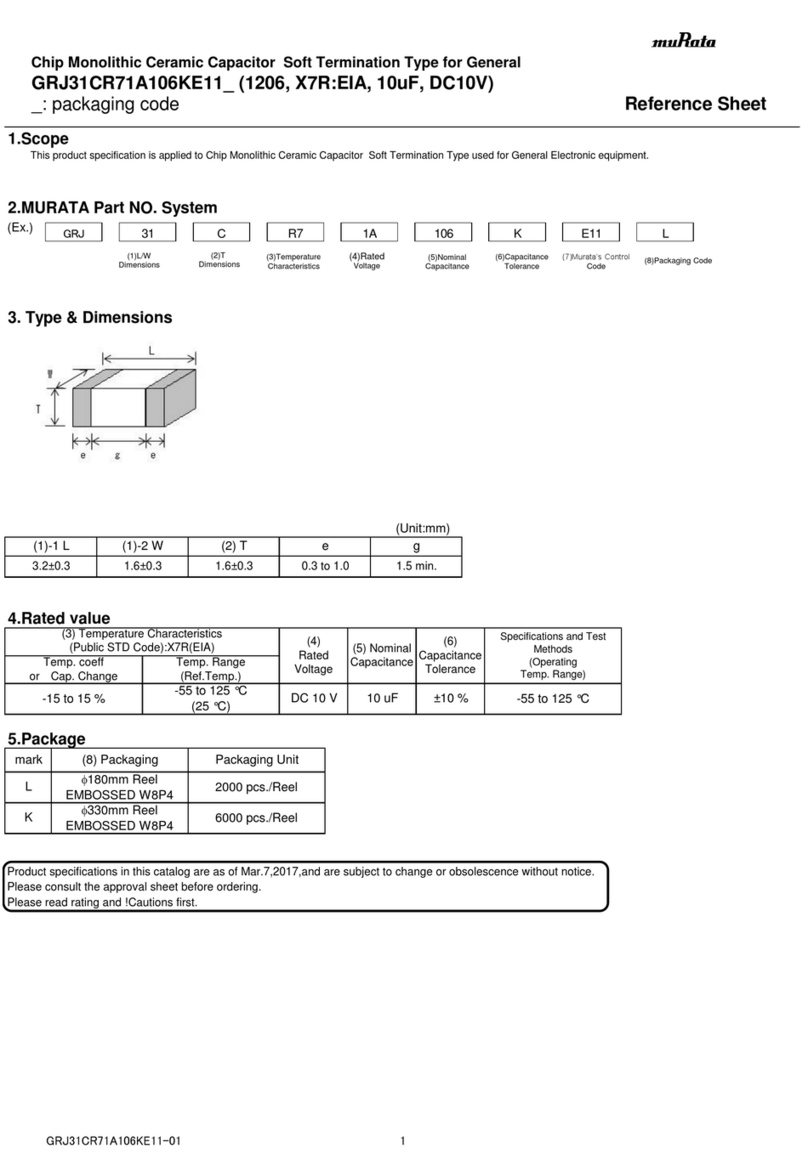
Murata
Murata GRJ31CR71A106KE11 Series Reference sheet

Murata
Murata GRT31CC80J226KE01 Series Reference sheet

Electro Composites
Electro Composites SDC manual
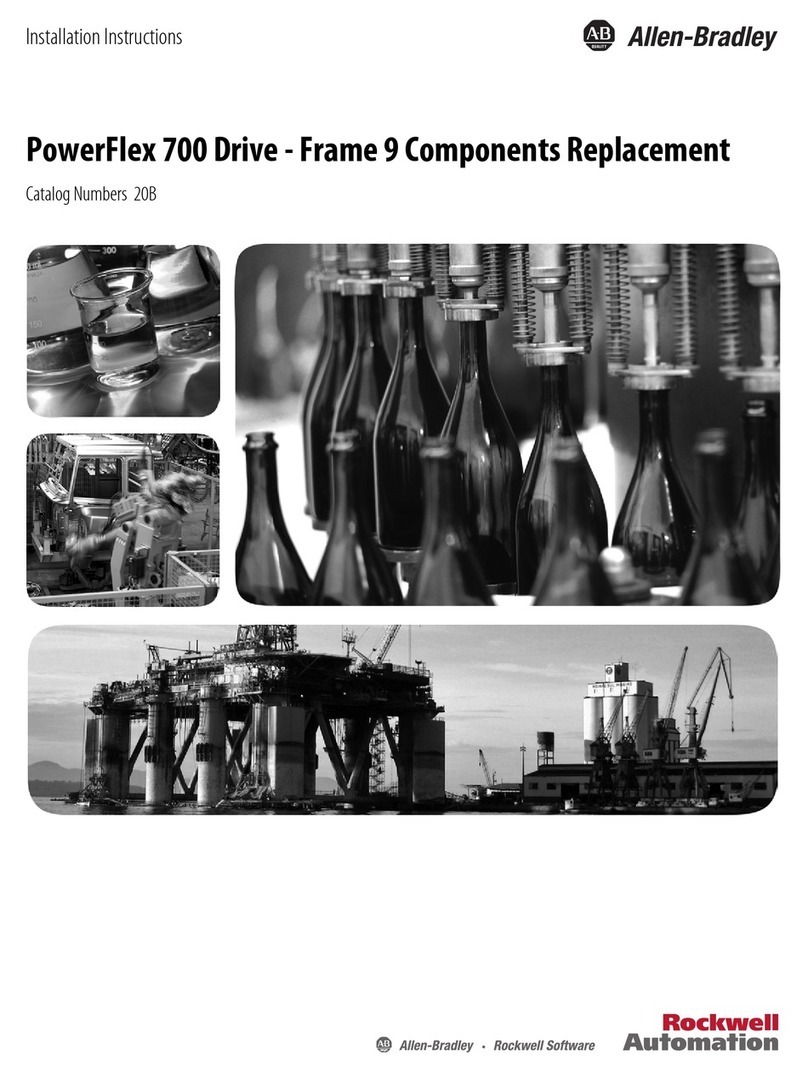
Rockwell Automation
Rockwell Automation Allen-Bradley PowerFlex 700 Drive Frame 9 installation instructions
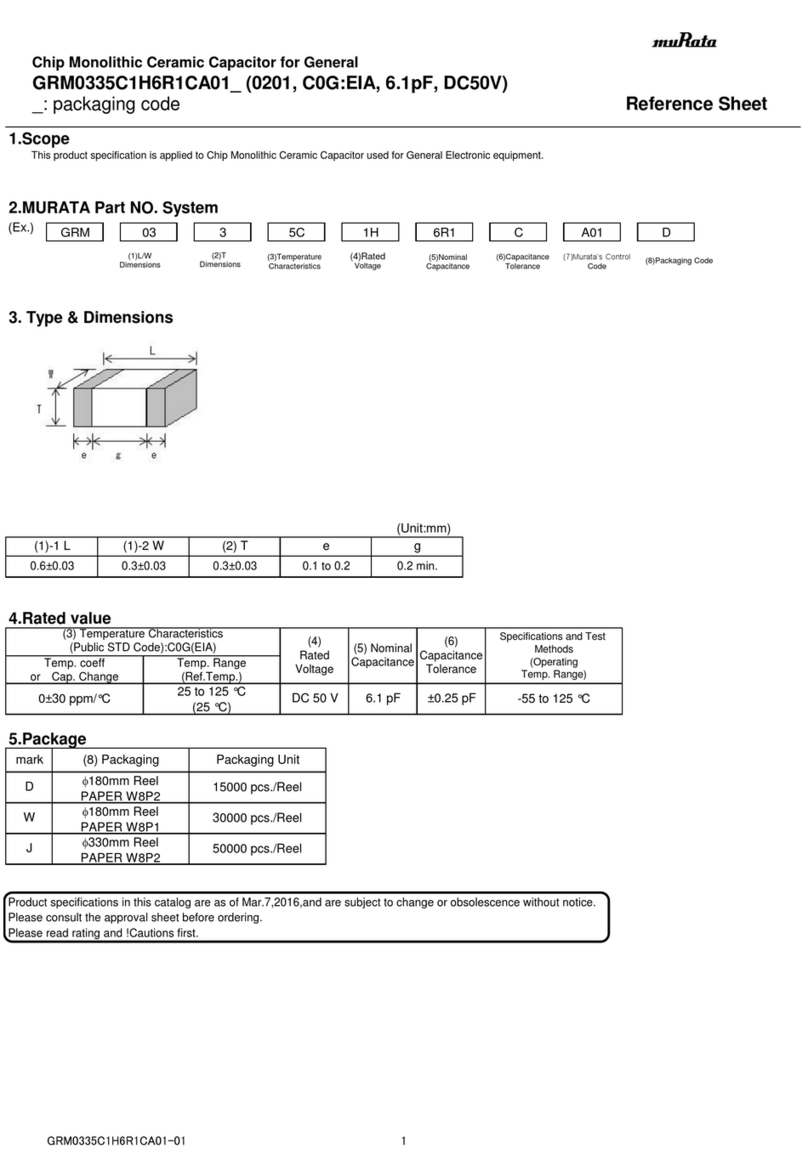
Murata
Murata GRM0335C1H6R1CA01 Series Reference sheet
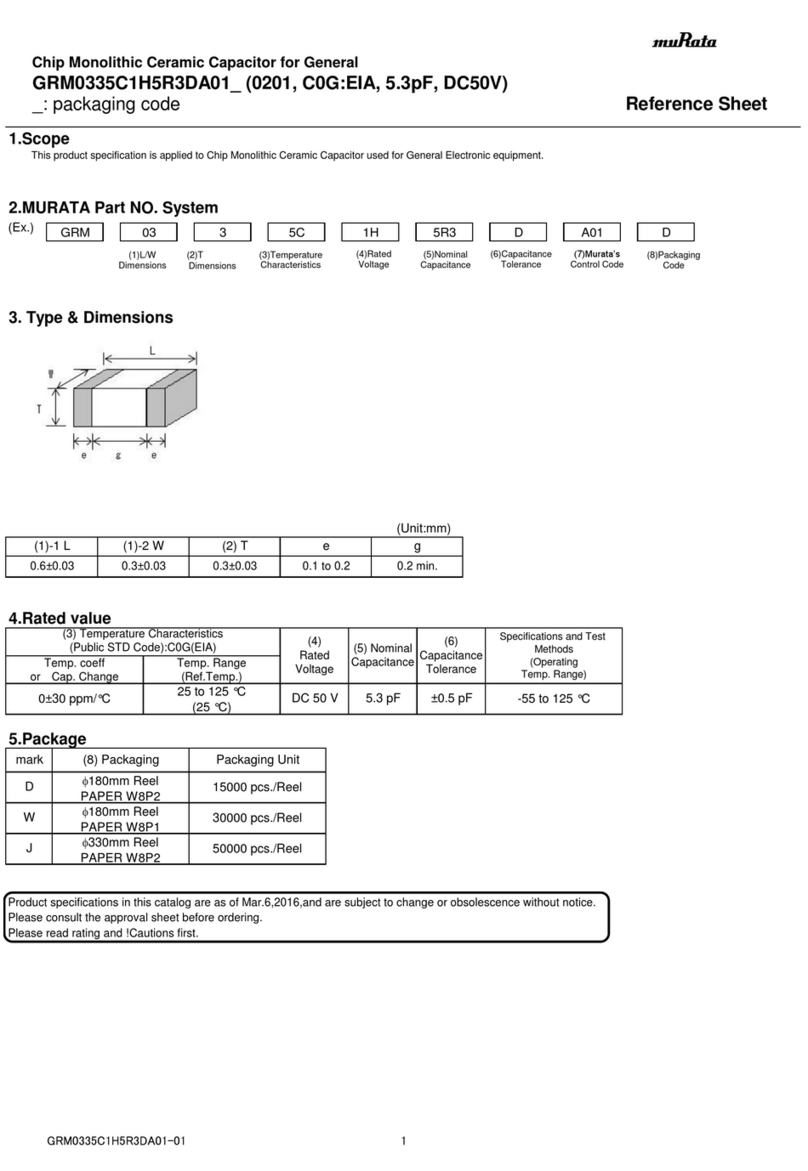
Murata
Murata GRM0335C1H5R3DA01 Series Reference sheet

